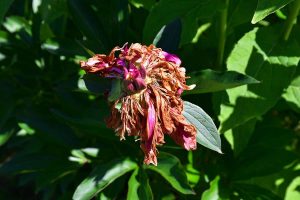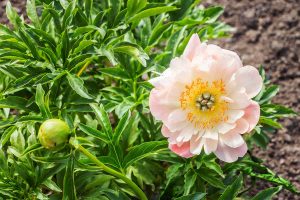Peonies are plants that produce stunning flowers in a variety of forms and colors. Purple peonies are among the rarest types of peonies, which make them a particularly sought-after peony color.
If you are on the lookout for some purple peonies, this list will reveal some of the best purple varieties available.
Table of Contents
Why are Purple Peonies Rare?
Purple peonies do not occur in nature very often, though there are a handful of naturally grown Chinese peonies; most peonies you find will be pink, white, or red. Due to the fact that there are not many naturally occurring purple varieties of peonies, most purple peonies are a result of hybridization.
This is where new varieties have been developed by crossing different types of peonies with each other. Often, a hybrid peony will result from the crossing of two different species of peony. However, there are examples where four different peonies have been used to create the resulting hybrid peony.
Varieties of Purple Peonies
Purple peonies are so unusual that they are considered a collector’s item among some gardeners. While purple peonies are rare, it is even rarer for a peony plant to produce flowers that are entirely a true shade of purple. Instead, most purple peonies produce pink-purple or red-purple flowers.
This means that when a peony is able to produce truly purple flowers, it is particularly prized. Some varieties of purple peonies are so rare that they can demand a very high price compared with the average peony price.
Here we explore a number of purple peonies, including red-purple peonies, pink-purple peonies, true purple peonies, and peonies that feature flushes of purple.
Moutan Peony ‘Cardinal Vaughan’
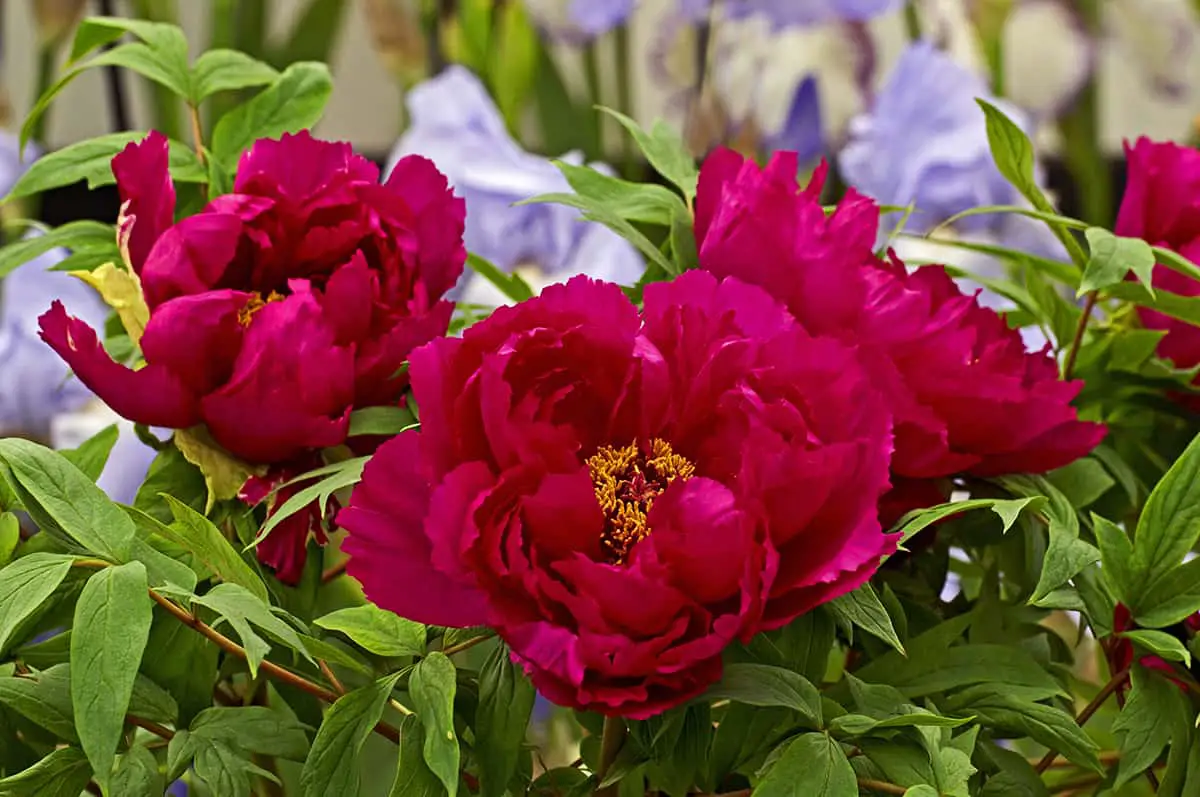
- Botanical name: Paeonia x suffruticosa ‘Cardinal Vaughan’
- USDA hardiness zone: 5 – 8
- Mature height: 4 to 7 feet
- Mature spread: 4 to 6 feet
This variety of peonies is a tree peony, which can easily be distinguished from herbaceous peonies because it takes the form of an upright, spreading tree or shrub. The flowers on this peony plant bloom in late spring and early summer, lasting for between 7 and 10 days. Each flower is bowl-shaped, with semi-double petals.
The flowers are a rich shade of purple-pink, contrasting beautifully against the deep green foliage. These are exceptionally easy-care plants that thrive in full sun and partial sun. They require little to no attention through most of the year and reward the gardener with reliable, large flowers each year.
This is one of the tallest purple varieties of purple peony available, making it a great choice for adding a little height to borders. It will take between 5 and 10 years to reach its ultimate size.
Chinese Peony ‘Cherry Hill’
- Botanical name: Paeonia lactiflora ‘Cherry Hill’
- USDA hardiness zone: 3 – 8
- Mature height: 2 to 4 feet
- Mature spread: 2 to 4 feet
This is an heirloom variety of Chinese Peony, famed for its intense color of deep purple-red flowers. The ‘Cherry Hill’ peony was introduced in 1915, with fully double blooms in a medium size. This is a vigorous grower and a prolific bloomer which will send out an abundance of blooms in late spring to early summer.
The foliage of this plant is also attractive and contrasts heavily against the flowers. Though this variety is described by many as a purple peony, the blooms are considered to be crimson red by some.
Intersectional Peony ‘Cora Louise’
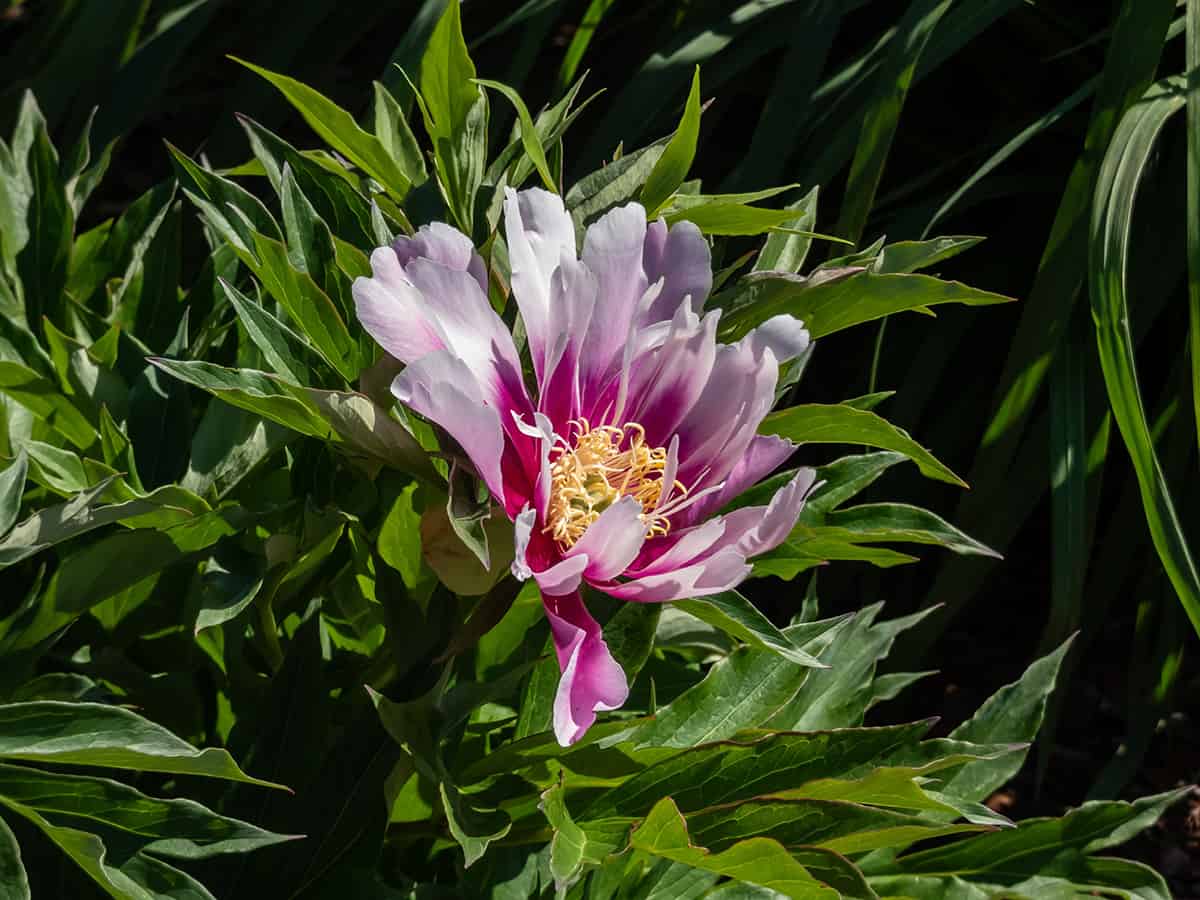
- Botanical name: Paeonia Itoh x ‘Cora Louise’
- USDA hardiness zone: 3 – 8
- Mature height: 1 to 2 feet
- Mature spread: 1 to 2 feet
This is often considered a white variety of peonies, however, the center of the flowers features a vibrant shade of purple which is rarely found in peonies, so it deserves a mention in any list of purple peonies. The ‘Cora Louise’ is an Itoh peony, also known as an intersectional peony.
These are a hybrid that results from crossing tree peonies with herbaceous peonies. The flowers of this variety have white petals which are very subtly tinged with lilac. The base of the petals is a vivid magenta-purple color, creating an intense contrast against both the white parts of the petals and the green foliage below. The flowers are semi-double and grow to an impressive span of 10 inches across.
Intersectional Peony ‘Morning Lilac’
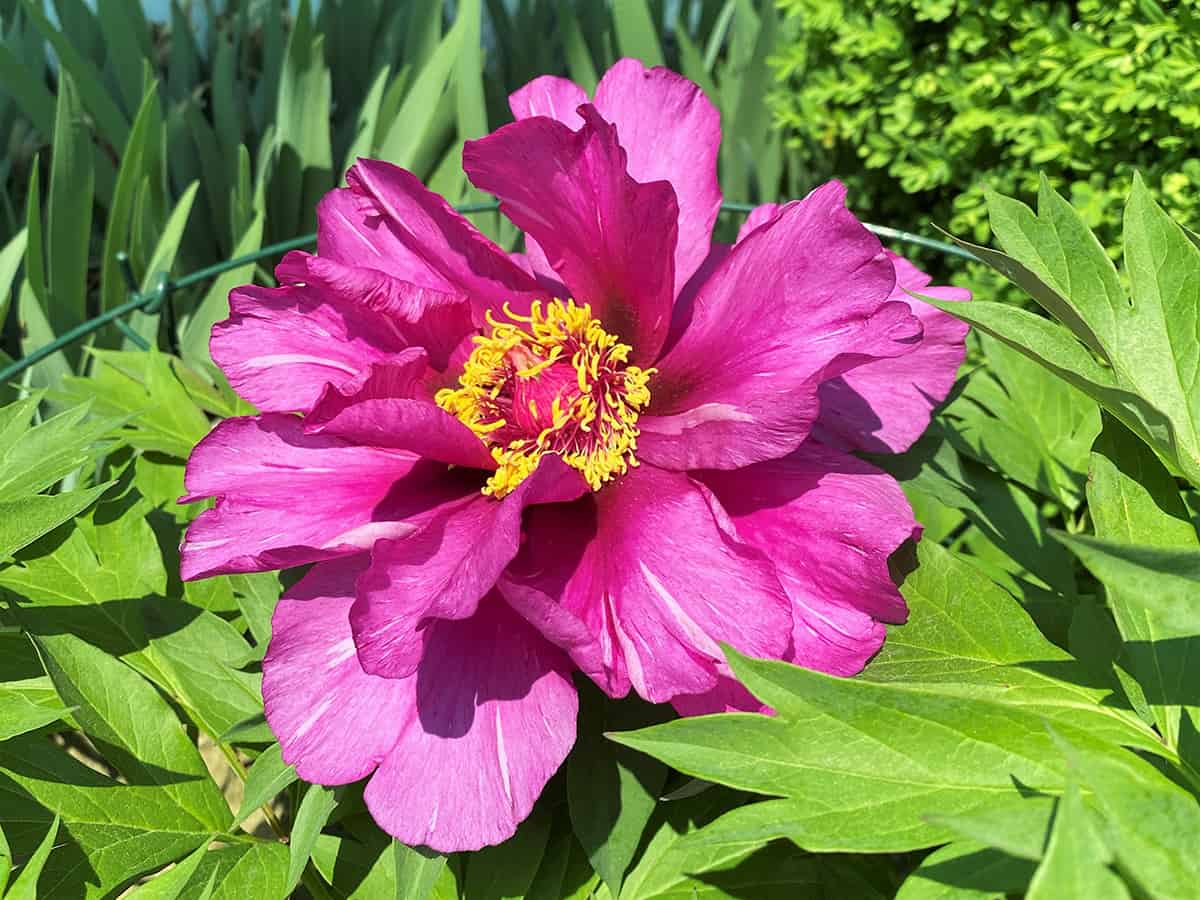
- Botanical name: Paeonia Itoh x ‘Morning Lilac’
- USDA hardiness zone: 3 – 8
- Mature height: 2 to 4 feet
- Mature spread: 2 to 4 feet
This peony is another Itoh peony, which has been bred by crossing a tree peony with an herbaceous peony. This variety is an award-winning plant, having received the Award of Garden Merit from the Royal Horticultural Society. It produces semi-double flowers with delicately ruffled petals.
The petals are predominantly a deep, vivid shade of purple, and they have flecks of lilac close to the tips. The stamens of these flowers are a bright golden yellow color, creating an intense visual contrast with the purple petals.
The flowers can grow up to 8 inches across, and despite being quite heavy, they do not need to be staked because the stems of this plant are very strong. This is a prized variety of peonies that is considered to be a collector’s item due to how rare it is.
Chinese Peony ‘Black Beauty’
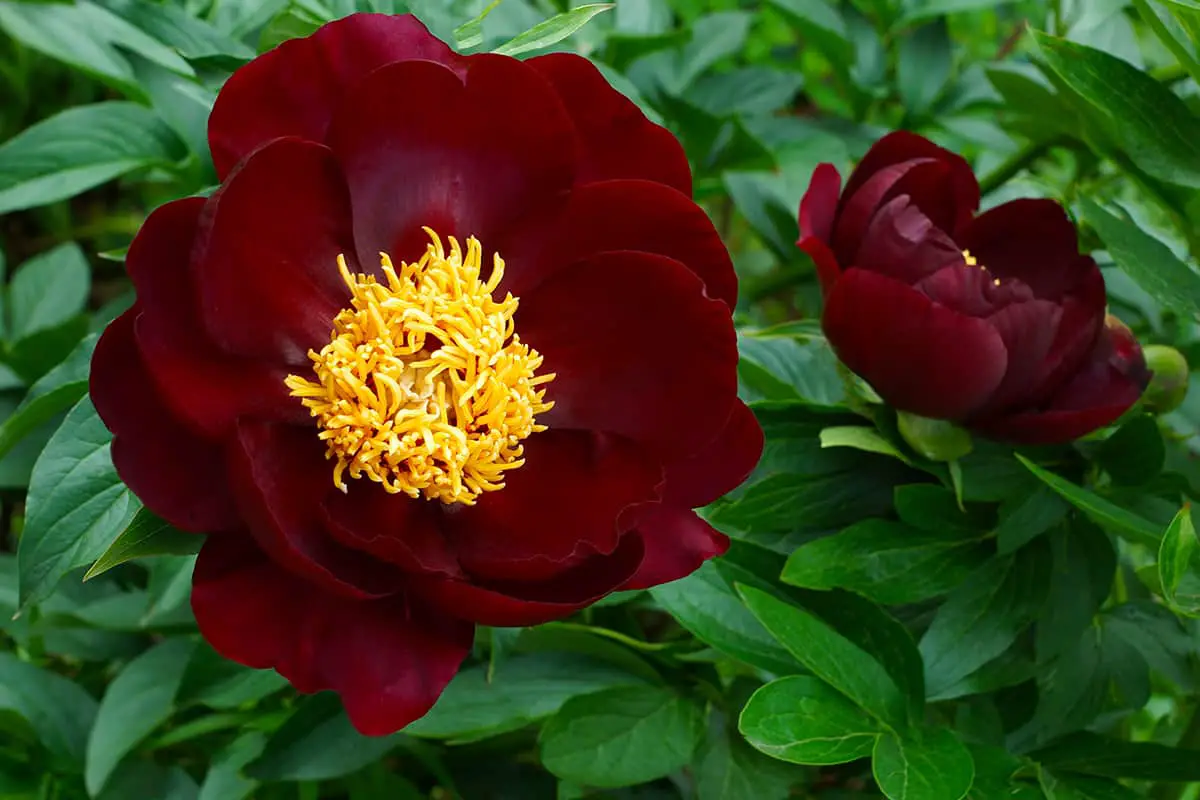
- Botanical name: Paeonia lactiflora ‘Black Beauty’
- USDA hardiness zone: 3 – 8
- Mature height: 2 to 4 feet
- Mature spread: 3 to 4 feet
This Chinese peony produces flowers in a rich burgundy color, which appears to be a cross between red and purple. It is also known by the common name of ‘Nightlife Peony’ because it is so dark that it can sometimes appear to be black. The flowers are shaped like saucers and have small bright yellow stamens in the center.
They grow on a bushy plant, which has dark green foliage, taking on a flush of red when it first emerges in the spring. An unusual characteristic of this peony is that it gives off a somewhat spicy scent.
Intersectional Peony ‘Pastel Splendor’
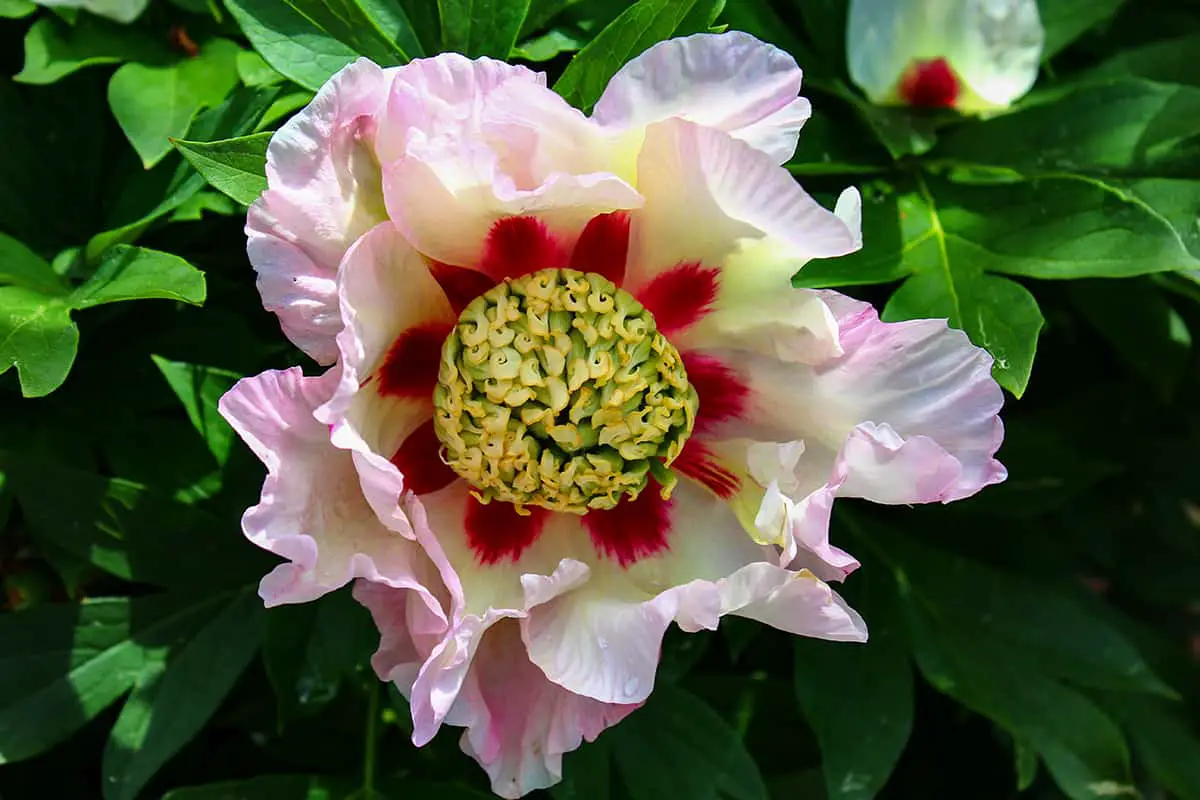
- Botanical name: Paeonia Itoh x ‘Pastel Splendor‘
- USDA hardiness zone: 3 – 8
- Mature height: 2 to 3 feet
- Mature spread: 2 to 3 feet
This Itoh peony produces flowers that change color as they mature. At first, the petals of the flowers emerge cream, flushed with dark red at the base. As they age, the petals fade to a pastel apricot color, with the red flush transforming to a purple flush. The center of the flowers is filled with crimped stamens in pale yellow.
The blooms of this peony are relatively small compared to other peonies, typically growing to around 4 inches across. The flowers arrive in the middle of the season and are scented with a delicate fragrance.
Chinese Peony ‘Peter Brand’
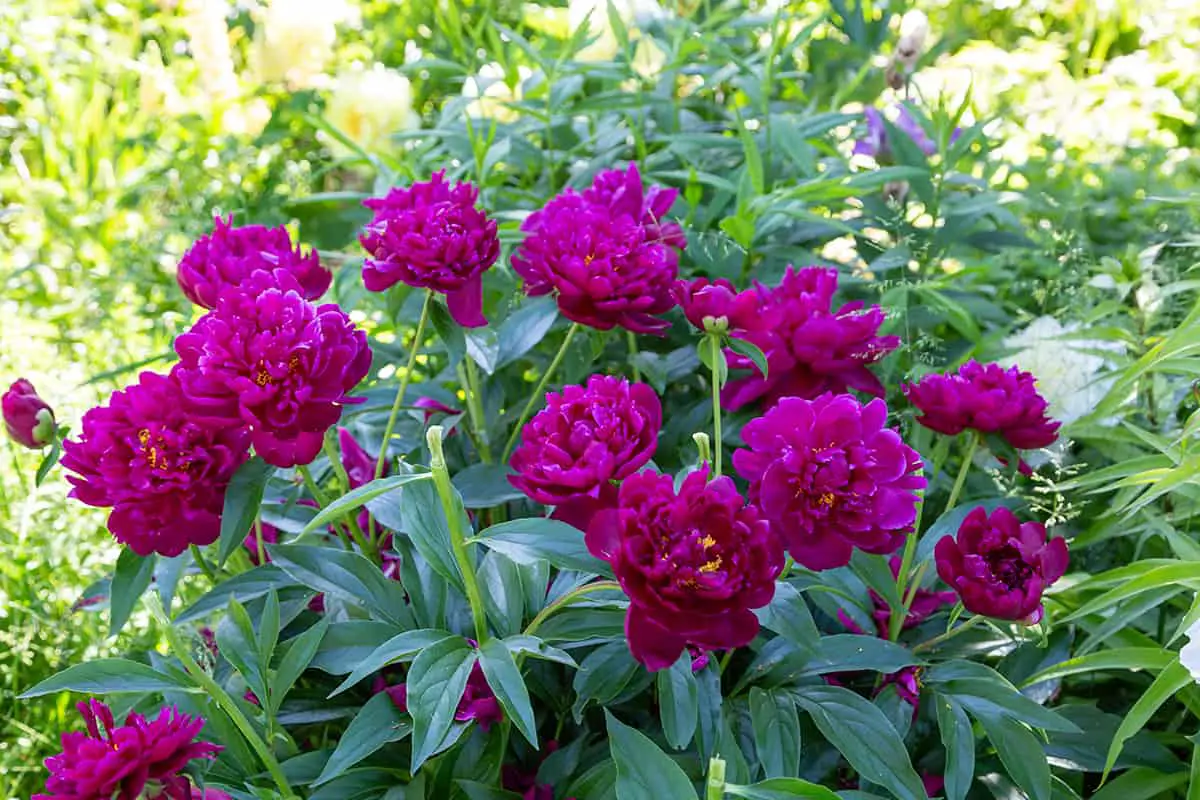
- Botanical name: Paeonia lactiflora ‘Peter Brand’
- USDA hardiness zone: 3 – 8
- Mature height: 2 to 3 feet
- Mature spread: 2 to 3 feet
This is a very sought-after variety of peonies that can demand a high price. It is loved for the huge flowers it produces which emerge in a deep shade of red and transform into a dark purple as the flowers age. The blooms span around 6 inches across and have an open bowl shape. It has a long life expectancy of between 50 and 70 years and grows to a maximum of 3 feet in either direction.
Intersectional Peony ‘Visions of Sugar Plums’
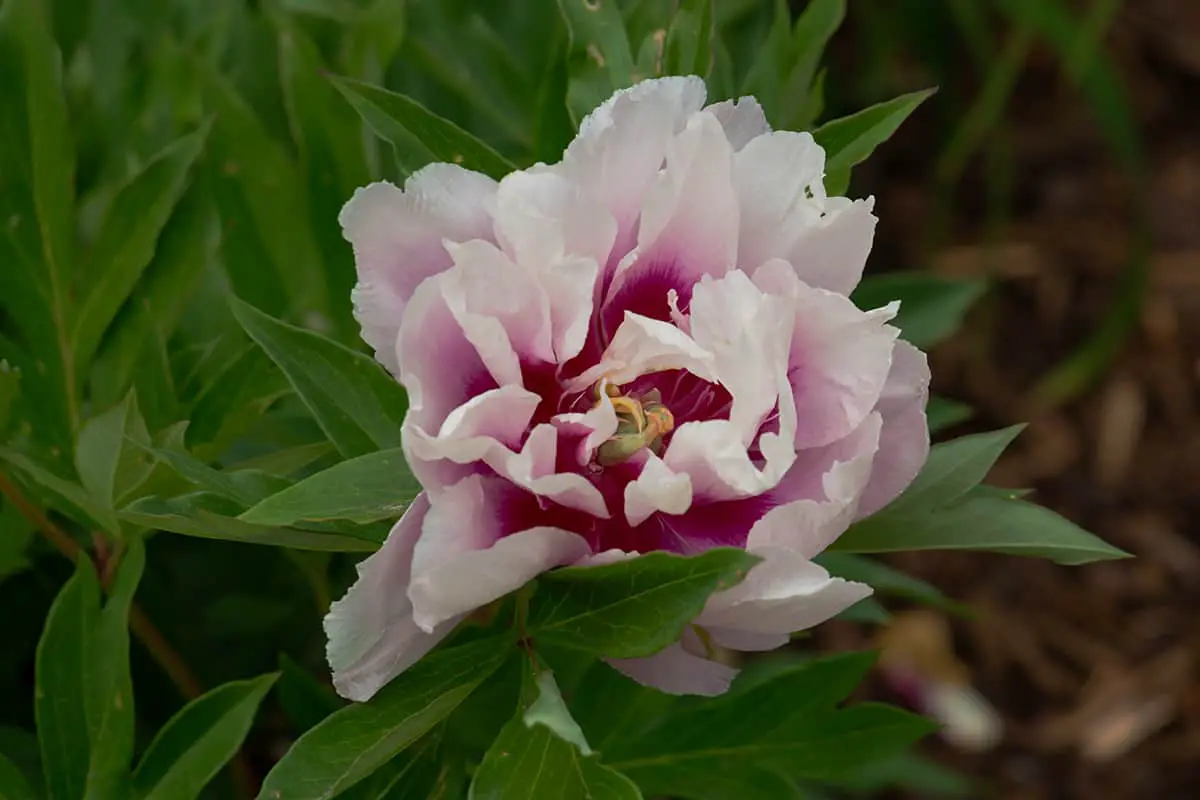
- Botanical name: Paeonia Itoh ‘Visions of Sugar Plums’
- USDA hardiness zone: 4 – 7
- Mature height: 2 to 3 feet
- Mature spread: 2 to 3 feet
This is another Itoh peony created by crossing a tree peony with an herbaceous peony. ‘Visions of Sugar Plums’ is a sought-after variety that adds delicate beauty to the landscape.
It produces creamy pink buds which open out to reveal dark red-purple flushes at the base. As the flowers mature, the petals take on a soft lavender hue, contrasted against deep yellow stamens. The flowers will typically measure around 6 inches across, blooming abundantly as the plant becomes more established.
Chinese Peony ‘Comanche’
- Botanical name: Paeonia lactiflora ‘Comanche’
- USDA hardiness zone: 3 – 8
- Mature height: 2 to 3 feet
- Mature spread: 2 to 3 feet
This is an award-winning variety of purple peonies, which bloom in late spring and early summer. It boasts the title of 2009 Award of Landscape Merit from the American Peony Society. The flowers of this plant are saucer-shaped, with large petals that splay outwards to be almost flat.
The petals have slightly ruffled tips and are a bright shade of magenta-purple. This is contrasted against the dark, golden-yellow stamens. Each flower will last for up to ten days, and they can also make excellent cut flowers, especially if cut while in the bud. The foliage of the plant forms a bushy mound, in medium glossy green. The foliage remains attractive long after the flowers have faded, right into fall until the temperatures drop too low and the leaves fall to the ground.

